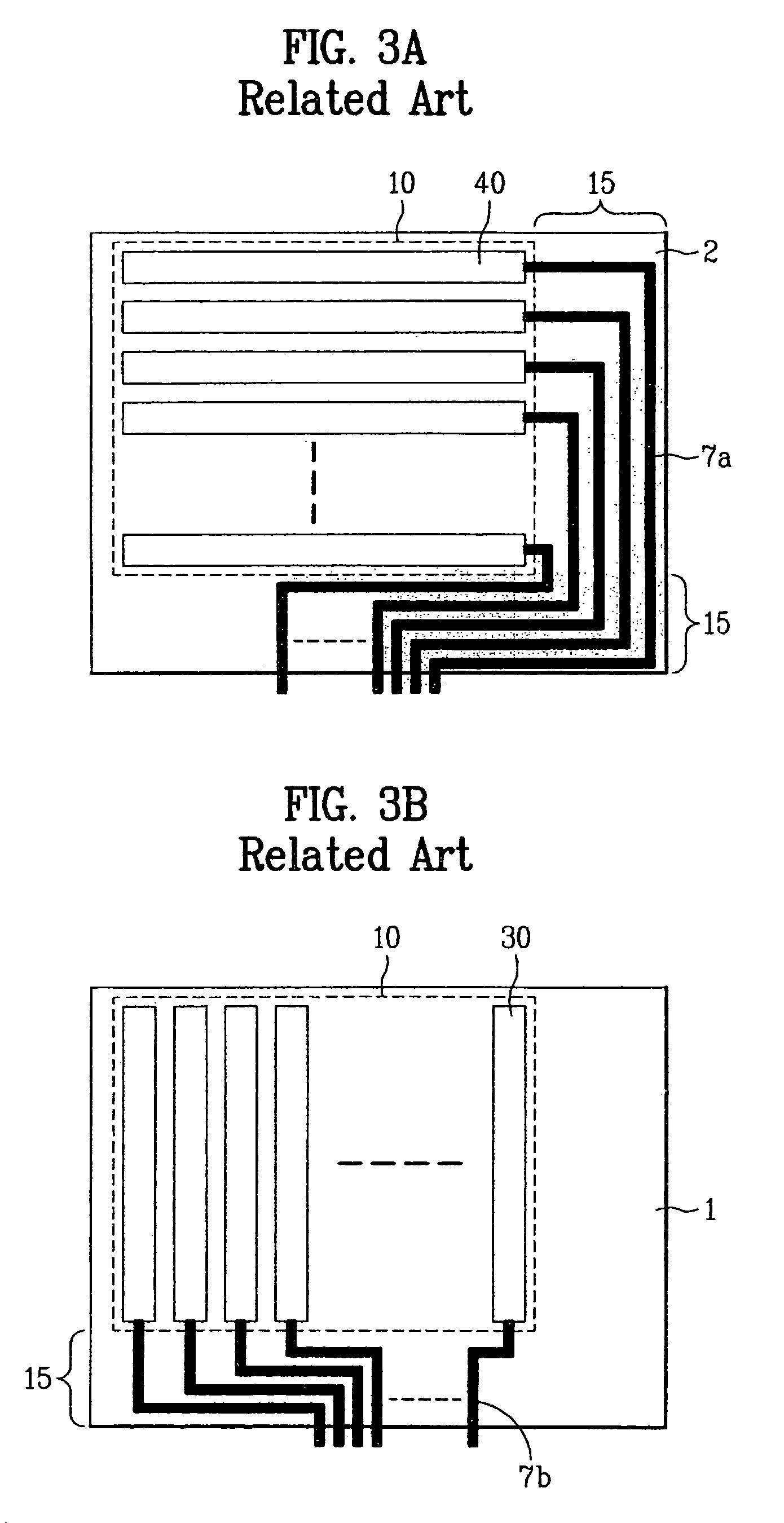Digital resistive-type touch panel
a touch panel and resistive technology, applied in the field of digital resistive-type touch panels, can solve the problems of disadvantageous use of the aforementioned related art digital resistive-type touch panel, and achieve the effect of increasing the ratio of viewing area to dead space region
- Summary
- Abstract
- Description
- Claims
- Application Information
AI Technical Summary
Benefits of technology
Problems solved by technology
Method used
Image
Examples
first embodiment
[0044]FIGS. 4A and 4B illustrate plan views of lower and upper substrates and the plurality of patterned transparent electrodes in accordance with principles of the present invention. FIG. 5 illustrates a cross-sectional view taken along line B-B′ of FIGS. 4A and 4B.
[0045]Referring to FIGS. 4A and 4B, a first plurality of patterned transparent electrodes 230 may be arranged on a first surface of an upper substrate 210. Moreover, the first plurality of patterned transparent electrodes 230 may be spaced apart from each other by a predetermined distance along a first direction (e.g., an X-axis) and extend over the first surface of the upper substrate 210 along a second direction substantially perpendicular to the first direction (e.g., an Y-axis direction). In another aspect of the present invention, however, the first plurality of patterned transparent electrodes 230 may be spaced apart from each other by a predetermined distance along the second direction and extend over the first su...
second embodiment
[0057]FIG. 6 illustrates a plan view of an upper substrate of a digital resistive-type touch panel in accordance with principles of the present invention.
[0058]Referring to FIG. 6, a digital resistive-type touch panel according to a second embodiment of the present invention may differ from the aforementioned digital resistive-type touch panel according to the first embodiment of the present invention in that first end portions of the first plurality of patterned transparent electrodes 230 shown in FIG. 4A may be connected to each other to form a first transparent electrode pattern 230a. Further, according to the second embodiment of the present invention, the power source voltage Va and a ground voltage GND may be applied to opposing ends of the first transparent electrode pattern 230a via power lines 270a and 270b.
[0059]In one aspect of the present invention, the first transparent electrode pattern 230a may be formed by connecting the respective first end portions of the first pl...
third embodiment
[0060]FIG. 7 illustrates a plan view of an upper substrate of a digital resistive-type touch panel in accordance with principles of the present invention.
[0061]Referring to FIG. 7, a digital resistive-type touch panel according to a third embodiment of the present invention may differ from the digital resistive-type touch panel according to the first embodiment of the present invention in that the main line 260a of the first signal line 260 shown in FIG. 4A may be formed in a tortuous pattern 260a. By providing the tortuous main line 260a, the length of conductor between adjacent ones of the first plurality of patterned transparent electrodes 230 may be increased. In one aspect of the present invention, the main line 260a may be formed of a metal material having an electrical resistance less than a material such as ITO.
[0062]According to principles of the present invention, use of the digital resistive-type touch panel is advantageous because dimensions defined where the patterned t...
PUM
 Login to View More
Login to View More Abstract
Description
Claims
Application Information
 Login to View More
Login to View More - R&D
- Intellectual Property
- Life Sciences
- Materials
- Tech Scout
- Unparalleled Data Quality
- Higher Quality Content
- 60% Fewer Hallucinations
Browse by: Latest US Patents, China's latest patents, Technical Efficacy Thesaurus, Application Domain, Technology Topic, Popular Technical Reports.
© 2025 PatSnap. All rights reserved.Legal|Privacy policy|Modern Slavery Act Transparency Statement|Sitemap|About US| Contact US: help@patsnap.com



